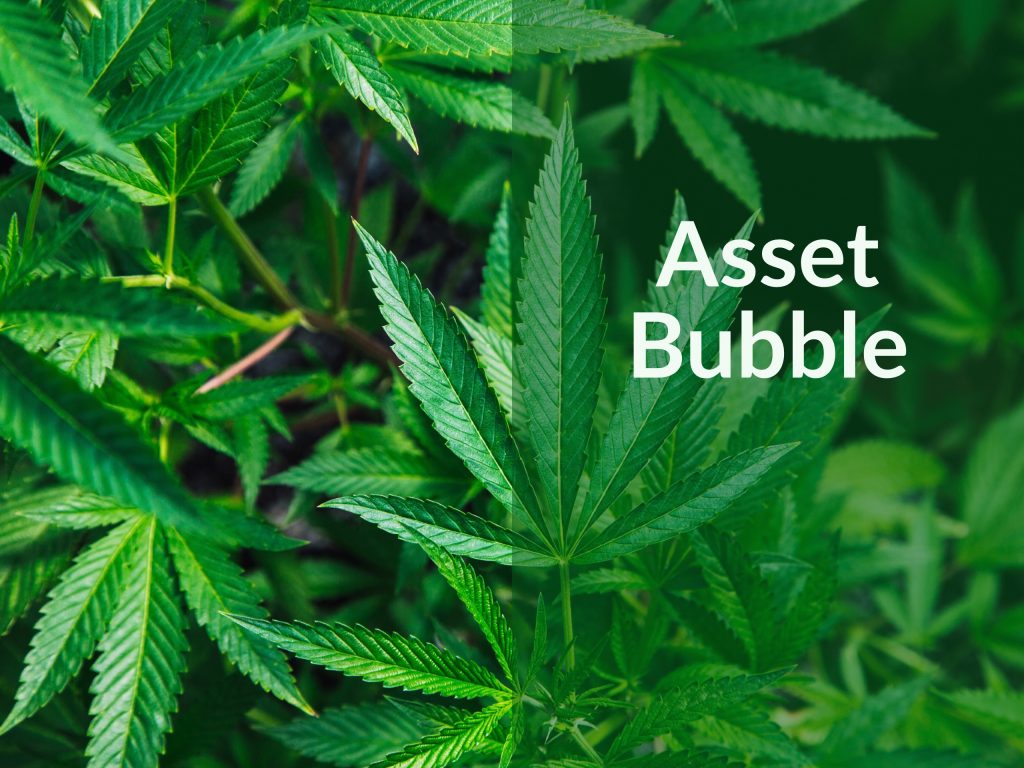What are the characteristics of an asset bubble and how to invest when one exists. Are cannabis stocks in a bubble?
In this episode you’ll learn:
- How actions of investors determine whether there is a bubble
- Why cannabis stocks could be in a bubble.
- How to invest when there is a bubble and manage the fear of missing out.
Show Notes
Why Marijuana Stocks Cronos Group, Canopy Growth, and Tilray Jumped Today – The Motley Fool
Yes. It’s A Bubble. So What? Rob Arnott, Shane Shepherd, Bradford Cornell – Research Affiliates
America’s Invisible Pot Addicts – Annie Lowery – The Atlantic
Episode Sponsors
Related Episodes
365: Why Some Asset Bubbles Don’t Burst
Episode Summary
A recent listener of Money For the Rest of Us proposed a question to David, asking “Do you think the cannabis industry is behaving like an asset bubble?” Throughout this episode David unpacks this inquiry and explains his thoughts on asset bubbles, how to spot them, and how to invest with regards to them. He frames the conversation with case studies on Tesla and the dot-com era, and his thoughts are insightful and educational. Be sure to listen for the full story.
You can often spot an asset bubble by examining the amount of public conversation surrounding the asset class
One of the easiest ways to determine if a select few stocks or an entire industry is in a bubble is to examine the amount of public conversation surrounding the topic. People that may have never invested before begin holding stocks in one particular area, and that particular investment option seems to be everywhere all at once. However, public conversation isn’t always a reliable source of information, and David encourages listeners to make their own examinations before jumping into an investment strategy.
Hopeful assumptions are often what drive an asset bubble environment
Academics at Research Affiliates have defined asset bubbles as, “a circumstance in which asset prices 1) offer little chance of any positive risk premium relative to bonds or cash, using any reasonable projection of expected cash flows and 2) are sustained, because investors believe they can sell the asset to someone else for a higher price tomorrow, with little regard for the underlying fundamentals.”
By parsing through this definition, investors’ assumptions are the biggest drivers of an asset bubble environment. The stock can either be undervalued or overvalued, with each situation resulting in various outcomes for buyers and sellers. Making judgments and investment decisions based on the personal (and subjective) opinions of others is the biggest determining factor in asset bubbles.
Tesla and the dot-com era are two great examples of bubbles in the US economy
The dot-com era of investing is perhaps the greatest example of an asset bubble. Hundreds of thousands of people jumped into investing for fear of missing out, and many aggressive assumptions were made. Another great example of a micro-bubble scenario is Tesla. Will electric cars become the norm in the future? Will Tesla be able to raise the capital to cover their annual cash flow and current debt? These questions and more are discussed on this episode of Money For the Rest of Us.
You can react to asset bubbles in a variety of ways
The original listener asking about a bubble in the cannabis industry was wondering how to invest in this type of situation. Throughout this episode, David offers a few considerations on how to handle a bubble. The following are all options, and every investor needs to make their own decision regarding how to invest in environments that are behaving like a bubble.
- Shorting stocks
- Underweight your portfolio for those stocks in particular
- Participate in anti-bubble investment strategies
- Diversify your portfolio
- Be patient, hold cash, and evaluate the market’s behavior
- Simply don’t own stocks in the bubble
For more great information on asset bubbles and how to invest given these types of situations, be sure to give this episode your full attention.
Episode Chronology
- [0:10] Is the cannabis industry in an asset bubble right now?
- [4:41] Public conversation is often a sign of an asset bubble
- [8:19] Hopeful assumptions are often what drive an asset bubble environment
- [13:24] Tesla can be considered an example of a micro-bubble
- [21:57] You can handle an asset bubble in a variety of ways

